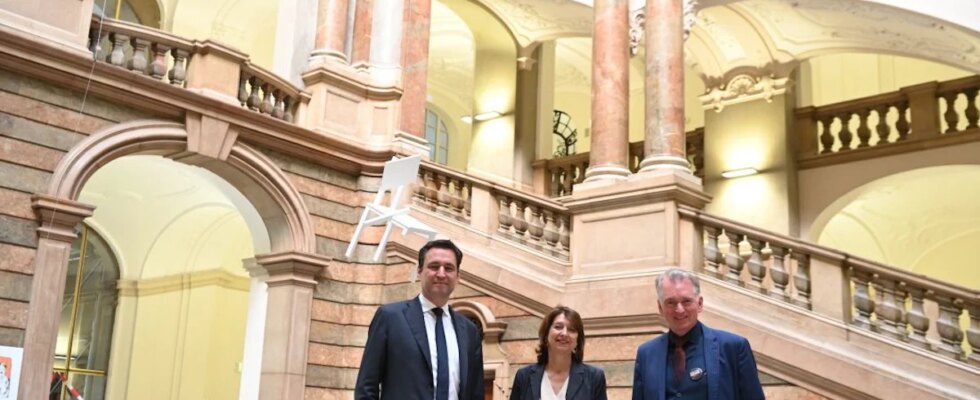These days you can see how “the law is hanging in the air”. In the Palace of Justice at Stachus, under the stately light dome, chairs float down from above. It is an installation that the cabaret artist Christian Springer had put together – as part of the exhibition “Protocol of a Failure of Justice – 100 Years of the Hitler Trial”.
Chairs because on November 8, 1923, Adolf Hitler climbed onto a chair in what was then the Bürgerbräukeller, where the Gasteig is now awaiting renovation, fired a pistol shot into the ceiling and proclaimed the “National Revolution”. The putsch failed; neither the Bavarian government nor the Reich government were deposed, as the revolutionaries had demanded. The charges against Hitler, World War II General Erich Ludendorff and eight other people were later charged with high treason on February 26, 1924.
The trial at that time did not take place in the Palace of Justice, but in the former infantry school on Blutenburgstrasse. A spectacle that the historian Reinhard Weber described in his statement at the opening of the exhibition as an example of a “blatant perversion of the law”. Hitler was considered the “undisputed star of the trial” and got away with a lenient sentence of five years in prison, of which he only had to serve nine months in Landsberg prison.
“The judiciary played an inglorious role back then and did not stop Hitler, even though it was their duty. They allowed Hitler to use the courtroom as a stage for his inhumane propaganda and even profit from it,” said Bavaria’s Justice Minister Georg Eisenreich (CSU) on Monday evening. Looking into the past helps us to act wisely in order to make democracy crisis-proof against extremism – also in view of the three upcoming state elections in the fall.
Last year, another project aimed at raising awareness of Nazi injustice was launched in the Palace of Justice: the newly designed permanent exhibition “Arbitrariness in the Name of the German People”, which details the trials and death sentences against the Scholl siblings, Christoph Probst, Willi Graf, Kurt Huber and Alexander Schmorell, the White Rose resistance fighters. 3,000 visitors have already seen the exhibition.
The chairs will be on display in the Justice Palace at Prielmayerstrasse 7 until July 5th. Christian Springer initiated it together with his “Short Shoulders” initiative, which campaigns against hate speech and violence, xenophobia and fatigue with democracy. “Anyone who allows extremists to dispense justice will destroy democracy, prosperity and peaceful coexistence,” said the cabaret artist and author, who said that a few years ago he single-handedly broke up a large NPD rally on Marienplatz – “I say “Don’t do it now so I can do it again.”
The chairs floating from the dome were assembled incorrectly and do not serve their purpose. Nobody can sit on them – and they are also inaccessible because they hang so high. “The assembly instructions were disregarded. Just like the legal requirements in the context of the Hitler trial by the judges,” said Springer. The symbol for the existing law, which still existed in the Weimar Republic, is a single orange chair, it is correctly assembled.

